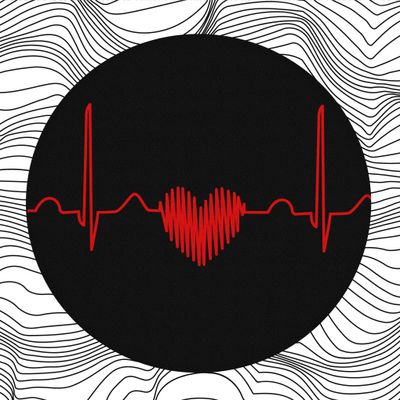
Last year I got curious about wearing a device that claimed to measure my health by way of my heart rhythms. More than my health, it supposedly measured my personality, in a way — or at least my stress levels and emotional resiliency. It sounded ridiculous, but I also wanted to know.
This device kept track of my heart-rate variability, or HRV. Essentially, the wristband (or chest strap) listens to your heartbeats and then gives you a number between one and 100, which it calculates using a complicated algorithm. This number (supposedly) expresses your general mind-body stress level — in fact, it (supposedly) accounts for all forms of stress: emotional, physical, and mental. Low numbers are “bad,” indicating stress and the need for recovery, while high numbers are “good,” and indicate readiness and well-being.
A friend had described what it was like to wear her own HRV monitor. Her HRV readings would drop — that is, get “worse” — when she was having a hard time at work, hungover, or not sleeping enough. The bad readings so closely tracked her real-life stress that eventually I couldn’t resist. I wanted to know: What’s my heart doing? I’m sober, I exercise, my numbers must be through the roof! So I contacted a couple companies to request two different kinds of HRV monitors, and I wore them both, on and off, for a few months.
But first, I had to actually understand what HRV is, which turned out to be a challenge.
What is heart-rate variability (HRV)?
HRV is like heart rate, but a degree more zoomed in: It counts how many times your heart beats, but it also measures the milliseconds of difference between those heartbeats. Hearts aren’t like metronomes, and apparently the more stressed out and rundown you are, the more regular your heartbeat becomes, whereas the more peaceful and energetic you are, the more irregular your heartbeat is. The difference between heartbeats (or, HRV) also fluctuates with the breath — another way to think of it is as a measurement of the difference between your heart rate when you’re breathing in (faster), and your heart rate when you’re breathing out (slower). It’s also used to measure the tone of the vagus nerve, which is associated with overall steadiness and calmness. (Measuring HRV is essentially an attempt to measure the autonomic nervous system, which regulates things like breathing, heart rate, and digestion, all of which are thought to reflect stress levels.)
Your HRV numbers are more or less a measurement of “your body’s ability to be responsive,” fitness device company Polar’s president, Tom Fowler, told me. Consistently low HRV numbers “can be a great wakeup call” to start taking better care of yourself, he said, whereas consistently high numbers should be taken advantage of — to seize the day, exercise, or go on a spontaneous date (or something like that). At this point I started to think of HRV readings as almost like heartbeat-based horoscopes, or mood rings.
So far these devices have mostly been used by elite athletes. A 2018 study found that competitive cyclists, for instance, performed better when they planned workouts around HRV readings than when they relied on traditional training programs. (And some lay people, like my friend, are beginning to use HRV monitors to keep an eye on the effects of day-to-day stressors, like short sleep and alcohol intake, although their numbers seem to be relatively small.)
What I used
HRV can be monitored with both chest straps and wrist straps, and I tried one of each.
I linked the chest strap (a Polar H10 Heart Rate Sensor, $89.95) to two apps: the Polar app, and an app called Elite HRV. I wore the strap under my sports bra all day, checking in on it during exercise sessions and to take two-minute HRV “snapshots” at random times. This system reliably gave me numbers indicating I was in the healthy/normal range for my age and gender (like “52” out of 100).
The wristband (called a WHOOP, starting at $180 for a six-month membership) came with its own app, and I wore the watchlike waterproof device around the clock, including while I slept. It also monitored my sleep (telling me which cycles I was in and for how long), tracked my athletic strain and “recovery,” and gave me daily single-number overall ratings. The HRV numbers it gave me were so low (like “23,” which almost no one in my age/gender range seemed to be getting) that I almost took it off after the first day.
What I learned
Throughout the months that I used these devices, my numbers stayed mostly the same: The Polar device continued to give me normal, reassuring numbers, while the WHOOP consistently read low, dispiriting ones. (It wasn’t until the end of the experiment that I learned that the Polar measures moment-to-moment waking HRV, while the WHOOP measures a single HRV fluctuation captured during a particular moment in the sleep cycle — specifically the first five minutes of my final “slow-wave sleep stage.” So, my low numbers were based on a lone yet telling moment of wacky sleep? I don’t know. I give up; these devices were not for me.)
I took my low numbers as a sign that I need to sleep more (or do something better — I actually thought I was sleeping okay), but ultimately it was a relief to take both devices off altogether. If I were more of an athlete, I imagine HRV tracking might have a more obvious benefit. In the meantime, it was fun (well, it was stressful and confusing) to scratch the itch.

